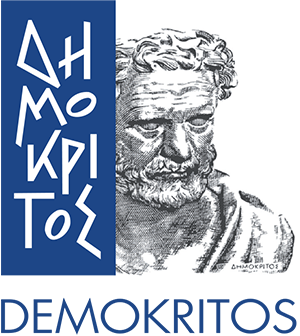Chatzikos Vasileios

Vasileios Chatzikos is a PhD student working under the framework of the European Consortium for the Development of Fusion Energy (EUROfusion), at the Fusion Technology Group (FTG) of the Institute of Nuclear and Radiological Sciences and Technology, Energy and Safety of NCSR "Demokritos", since November 2018.
He investigates the evolution of open volume defects and its correlation with the transmutation products in neutron irradiated tungsten materials for fusion energy applications as a function of the irradiation temperature and dose and the tungsten microstructure. The experimental methods he uses are gamma-spectroscopy coupled with Monte Carlo neutron transport code and FISPACT code calculations, and positron annihilation lifetime spectroscopy.
He received his BSc from the Physics Department of the Aristotle University of Thessaloniki in 2015 and his Master degree in Nuclear Physics from the Physics Department of the National and Kapodistrian University of Athens in 2017. The PhD thesis will be defended at the Physics Department of the University of Ioannina.
PhD Short Description
Thermonuclear fusion offers the possibility of a safe, abundant, clean and sustainable source of energy using small amounts of fuel (hydrogen isotopes). High temperatures as well as high fluxes of neutrons and other highly energetic particles during the operation of a magnetic confinement plasma device (Tokamak) make imperative the use of materials that are resistant to high temperatures and radiation. Tungsten (W) is a candidate plasma facing material for the interior walls of a fusion reactor due to its high melting point, high thermal conductivity, low tritium retention and heat stress resistance. However, tungsten suffers from brittle behavior at low temperatures due to the relatively high ductile to brittle transition temperature (DBTT) which ranges between 400 and 700 K, limiting its exploitation.
The objective of Vasileios Chatzikos’ PhD is to study the transmutation products of tungsten as well as the created open volume defects as a function of the irradiation temperature, the neutron irradiation dose and the tungsten microstructure. The experimental methods used to achieve this investigation are gamma-spectroscopy and positron annihilation lifetime spectroscopy (PALS).
Three types of tungsten are under investigation a) single crystal tungsten W (100), b) cold rolled tungsten sheet and c) double forged tungsten in the form of a square bar (ITER grade). These materials have been irradiated at the BR2 research reactor in Belgium, at four temperatures (600, 800, 900 and 1200 °C) and at irradiation doses corresponding to 0.1, 0.18, 0.5 and 0.75 displacements per atom (dpa).
The experimental results of gamma-spectroscopy measurements on tungsten samples lead to the identification and determination of the radioactive isotopes of Tungsten, Rhenium and Tantalum concentrations as a function of the neutron irradiation dose. Through the comparison of the experimental values with theoretical calculations, using MCNP neutron transport code and FISPACT-II radionuclide inventory code, the quantification of the transmutation products in the irradiated tungsten is achieved.
Employing Positron Annihilation Lifetime Spectroscopy (PALS) spectroscopy technique the evolution of the open volume defects type (vacancies, dislocations and vacancy clusters) and their relative concentrations is determined as a function of irradiation temperature and dose. Moreover, the evolution of the open volume defects will be assessed in correlation with the transmutation products.

